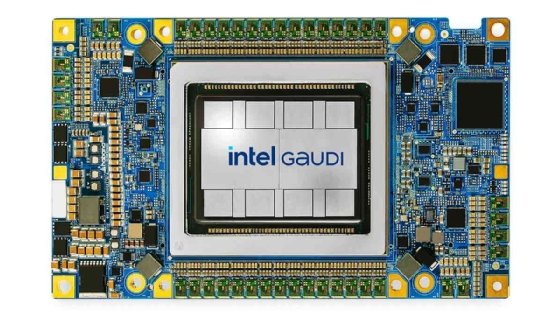Intel has delivered its latest data center processor and AI accelerator, demonstrating that it can deliver essential products to customers while battling historic financial setbacks that cloud its future.
This week, Intel released its Gaudi 3 AI accelerator and top-performing Xeon 6 processor to server makers for delivery to customers. Intel provided product details in June and brought them to market on time.
The product shipments came several days after reports that Qualcomm had approached Intel to propose a friendly takeover and that Apollo Global Management had offered to make an equity investment of up to $5 billion in the company. Bloomberg and The Wall Street Journal reported the developments, citing anonymous sources.
Intel evaluates all options is struggling with financial setbacks ranked among the worst in its 56-year history. Intel’s market cap is a third of what it was four years ago, and its stock price is down about 60% as the company heads toward its third straight year of declining sales .
Analysts expect Intel to survive the crisis, but the question on their minds is less about product releases than how the company’s severe cash crunch will transform it. Future investors will expect Intel to divest assets unrelated to its core business of designing and manufacturing chips for servers and data center PCs.
“The value I think people are looking to unlock from Intel is not a growth opportunity,” said David Nicholson, director of research at The Futurum Group. “This is an optimization opportunity. How much fat can we cut and still preserve muscle? What would that muscle be worth over time?
“I see the vultures circling in this regard.”
Non-core products that Intel designs and manufactures include network adapters and controllers as well as Wi-Fi and Bluetooth chips. In 2023, Intel spun off its Programmable Solutions Group that manufactures field-programmable gate arrays for customizable hardware.
Xeon6 and Gaudi meet market demand
Xeon 6 and Gaudí 3 moving Intel in the direction it needs to go in the fast-growing AI market, dominated by cloud providers that buy Nvidia’s expensive GPUs to train generative AI models, analysts said.
Over the next few years, analysts expect this dynamic to change. Companies will purchase servers with standalone AI accelerators and processors with neural processing units (NPUs) to run small AI models focused on specific tasks, such as predictive analytics in advanced manufacturing and the search for natural language documents within companies.
The Futurum Group forecast that the use of processors for AI processing in data centers will increase by 28% annually through 2028 to reach $26 billion. Processor architectures integrating multiple chips, including CPU, GPU and NPUwill increase by 31% per year to reach $3.7 billion.
Intel’s product focus is in line with these trends, which could attract investors, analysts say. A buyout is less likely because the buyer would like to make severe cuts, such as spinning off Intel’s stake. foundry companywhich recorded an operating loss of $7 billion in 2023.
The revival of Intel’s foundry business is behind the $8.5 billion the federal government gave the company as part of the Chip Act, an effort to rebuild domestic manufacturing of fleas. Federal regulators are reportedly looking closely at sweeping changes to the industry.
“I don’t think anyone at this point really wants to own all of Intel,” said Jack Gold, a senior analyst at consulting firm J. Gold Associates.
Whatever form Intel takes to return to good financial health, it will take several years, so no one should expect a quick fix, said Shane Rau, an analyst at IDC.
“The best thing for Intel, the best thing for the semiconductor market, the best thing for Wall Street is patience,” Rau said. “This needs to be played out, and we should not be in a hurry to find a solution.”
Antone Gonsalves is a senior editor for TechTarget Editorial, reporting on industry trends critical to enterprise technology buyers. He has worked in technology journalism for 25 years and is based in San Francisco.


